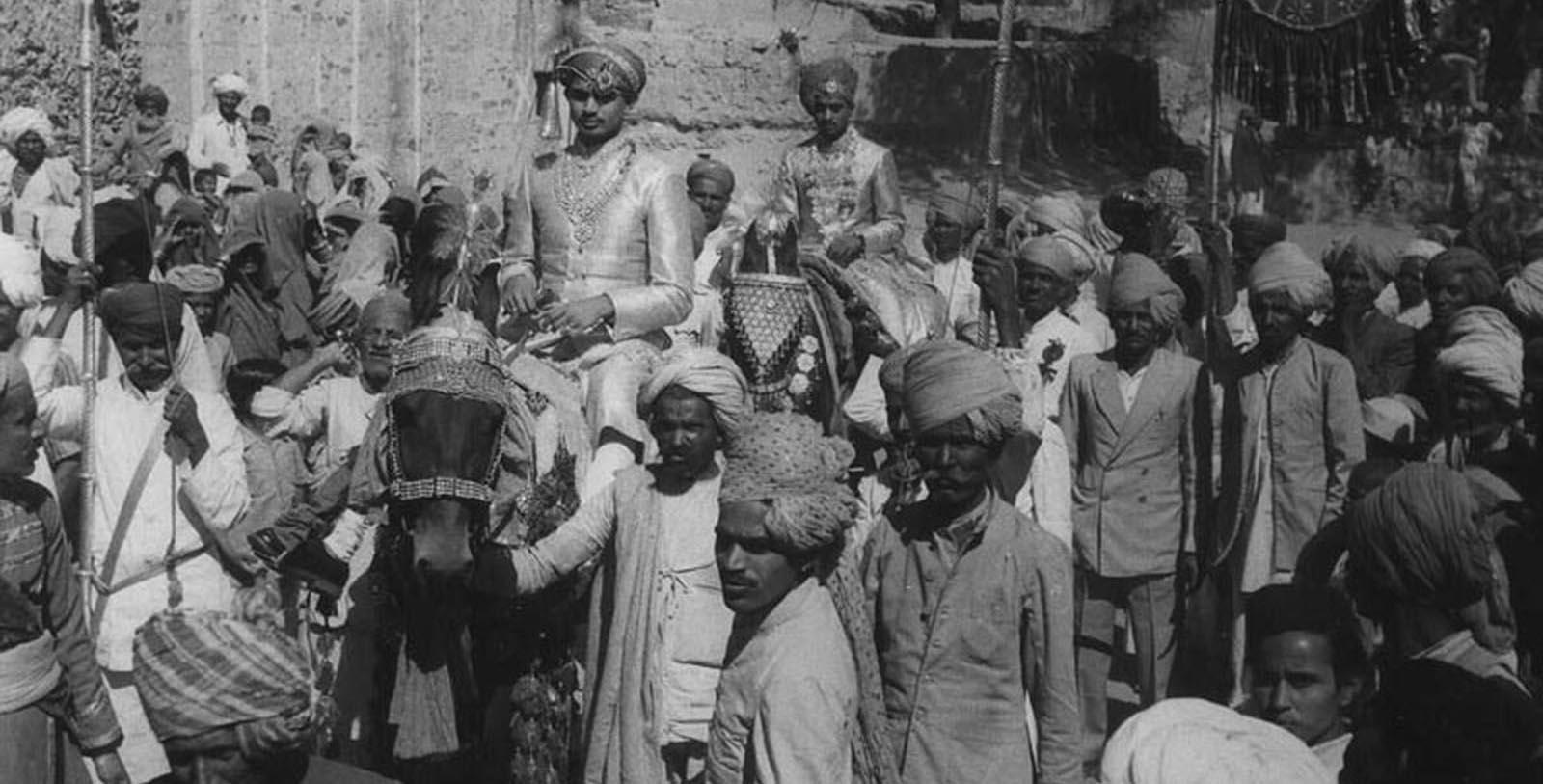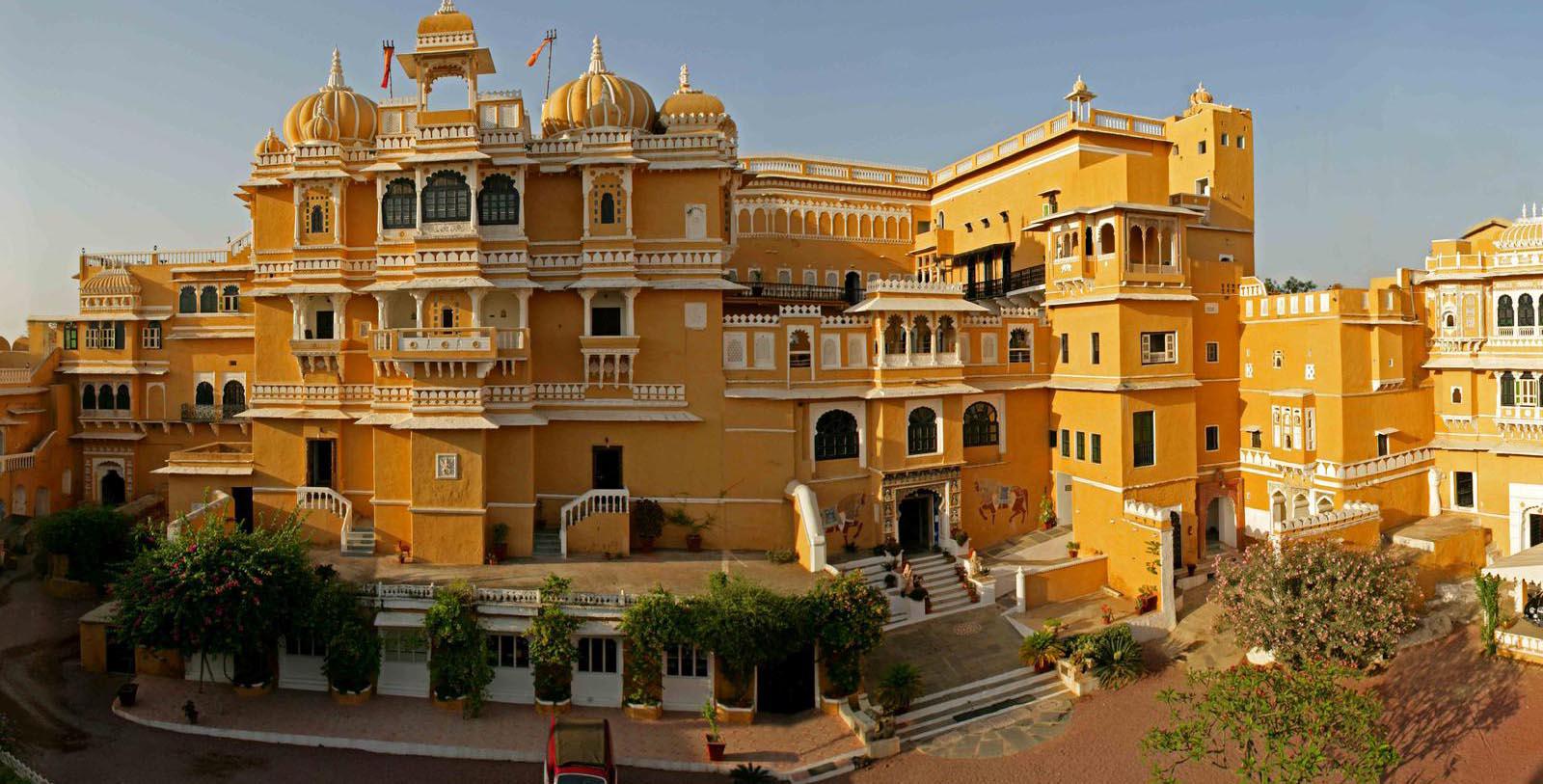Receive for Free - Discover & Explore eNewsletter monthly with advance notice of special offers, packages, and insider savings from 10% - 30% off Best Available Rates at selected hotels.
history
Discover the Deogarh Mahal, which was once the family residence for the powerful Sangawat clan of local rulers.
A member of Historic Hotels Worldwide since 2012, Deogarh Mahal's history begins far before the majestic palace was ever built. It actually starts with the powerful Sisodia family, a prominent clan of Rajputs who dominated local politics in the region of Mewar at the beginning of the 14th century. Ruling as monarchs over what became known as the “Kingdom of Mewar,” the Sisodias had solidified their influence fighting several military campaigns against neighboring Muslim states that sought to control the area. Indeed, one of the family’s most prominent ancestors, Sangram Singh I, achieved monumental victories over the hostile Delhi Sultanate. Unfortunately for the Sisodias, however, they gradually lost their political influence amid a fresh series of conflict with the Mughal Emperor, Akbar the Great. Despite valiantly resisting for decades, the Sisodia family evenutally accepted the Mughals’ suzerainty and became their chief feudal lords in Mewar by the end of the 1500s. The Sisodias soon controlled a new barony that was the fourth largest in all of northern India. In fact, the “jagir”—as it was called—governed an extensive population of people spread out among 210 villages. Some of the communities were even up to 60 miles (100 kilometers) away from the Sisodia capital of Chittorgarh. It was around this time that new friction manifested with the neighboring fiefdom of Marwar and its own leading family, the Rathores. The tension had specifically emerged when the Rathores began to encroach upon the Sisodias’ territory. The greatest period of conflict coincided during the reign of Chunda Sisodia, although he was able to forge a tenuous peace treaty after years of bitter fighting. Even with the newfound truce, the Sisodias nonetheless felt it necessary to construct a series of fortresses in the event war started again. As such, the Sisodia family and their various descendants raised a series of imposing castles throughout Mewar over the course of the 17th century. The Sangawat clan—a cadet branch of the family founded by one of Chunda’s great-grandsons—built a particularly imposing citadel in the vicinity of Deogarh in 1670. Called the “Deogarh Mahal,” the Sangawats subsequently ruled from inside the palace over the following centuries. Today, the Deogarh Mahal operates as a brilliant boutique hotel that pays tribute to the legacy of both the Sisodias and the Sangawats. Guests will certainly appreciate the historical artifacts and photography located on-site that preserve the heritage of the palace’s former residents.
-
About the Location +
The community of Deogarh is located within the sprawling northern Indian state of Rajasthan. Often called the “Land of Kings,” Rajasthan is filled with countless cultural attractions that chronicle a rich history harkening back generations. Its origins date to the 3rd millennium BC, with archeological evidence suggesting that the first human inhabitants occupied rudimentary villages along the Banas River. Additional artifacts indicate that Rajasthan was ruled by several prominent societies from India’s antiquity, including the Mauryans, the Bactrians, and the Scythians, before finally falling within the domain of the famous Gupta family. In fact, it was the Gupta emperors who constructed many beautiful Buddhist facilities throughout the region, namely shrines and temples. But the influence of the Guptas began to decline around the 6th century AD, with the Gurjara-Pratiharas dynasty emerging as the dominant local power. The Gurjara-Pratiharas specifically solidified their influence amid frequent military campaigns against invading Muslim armies that originated from modern-day Pakistan. Their victories enabled the Gurjara-Pratiharas to eventually grow their borders way beyond Rajasthan, which extended westward all the way to the banks of the Ganges River! Like the Guptas before them, though, the might of the Gurjara-Pratiharas Empire gradually disintegrated in the 10th century. In its wake, a group of minor regional lords transformed their lands throughout Rajasthan into petty kingdoms. Known as the “Rajput” clans, the families constantly warred with one another while also resisting additional incursions from more hostile Muslims armies further to the north. Nevertheless, despite efforts by some of the more powerful families to reunite the region—such as the Chauhans—the forces of the Delhi Sultanate eventually conquered Rajasthan around the beginning of the 13th century. A few local kings had nonetheless managed to maintain their independence, with the greatest among them being the Sisodias of Mewar and the Rathones of Marwar.
Those two kingdoms fought vigorously to preserve their sovereignty over the next two centuries, often driving back foreign militaries from across the subcontinent. One of the greatest Rajput rulers to emerge at this time was the king Sangram Singh I, who achieved monumental victories over numerous enemies. But the independent Rapjut kings soon had to contend with another threat following the collapse of the Delhi Sultanate—the Mughal Empire. Led by the emperor Akbar the Great, the Mughals launched their own successful conquest of Rajasthan during the 16th century. While some Rajput families continued to resist for some time—such as Maharana Pratap at the Battle of Haldighati—the Mughals eventually pacified Rajasthan through a series of marriage alliances and select political appointment. As such, Rajasthan had become a core constituency within the now sprawling Mughal Empire by the start of the 1700s. Nevertheless, Rajasthan—as well as the rest of India—soon underwent a significant period of historical change. Shortly after the Mughal Empire had seemingly united all of Rajasthan, they were dethroned by the Marathas. But the Marathas quickly found their authority challenged after the British and their East India Company occupied India several decades later. In fact, the British proceeded to reorganize Rajasthan into a province known as “Rajputana,” although members of the British East India Company would later refer to the region as just “Rajasthan.” After operating as part of the British Raj throughout the 19th and early 20th centuries, Rajasthan became its own state within the newly formed nation of India in 1947. Today, Rajasthan continues to be one of the most important regions in India and is incredibly popular among cultural heritage travelers. Indeed, the territory is home to a wealth of cultural attractions, including nearly a dozen that are currently recognized as UNESCO World Heritage Sites!
-
About the Architecture +
The stunning Deogarh Mahal palace is one of the most architecturally striking landmarks in all of Rajasthan. The Sangawats used their influence to ultimately construct a spectacular complex centered on a magnificent exterior entrance. They specifically developed a gorgeous gateway arch that led patrons directly into a central courtyard by means of an area known as the “Kacheri.” (The kacheri itself was a space exclusively devoted to handling public legal matters, such as the administration of justice toward convicted criminals.) The Sangawats then placed a beautifully painted grand staircase past the courtyard, which guided all foot traffic further into the ornate palace. Guests would marvel at the plethora of small family shrines that lined the walkway just beyond the stairs, too. The ground level subsequently opened up into an expansive floorplan of municipal office space, where the Sangawat family oversaw the daily functions of ruling the region. But in the floors above, the Sangawats developed many of their personal living quarters. The intricate design motifs of each room belied the intimacy they conveyed, as the Sangawats’ entire court spent nearly most of their free time peacefully relaxing within them. Nevertheless, they featured a great variety of amazing architectural details that included stained glass windows and small private terraces. But some areas in the upper floors did fulfill incredibly extravagant functions, such as the expansive reception hall (today’s bar) and the white marble throne room. Now a wonderful boutique hotel, the Deogarh Mahal still pays homage to its earlier role as a royal residence. Many of the former apartments currently operate as luxurious guestrooms that pay homage to the legacy of the Sangawat family. Cultural heritage travelers today are encouraged to visit the Deogarh Mahal and experience the building’s wonderfully preserved historical architecture.


























